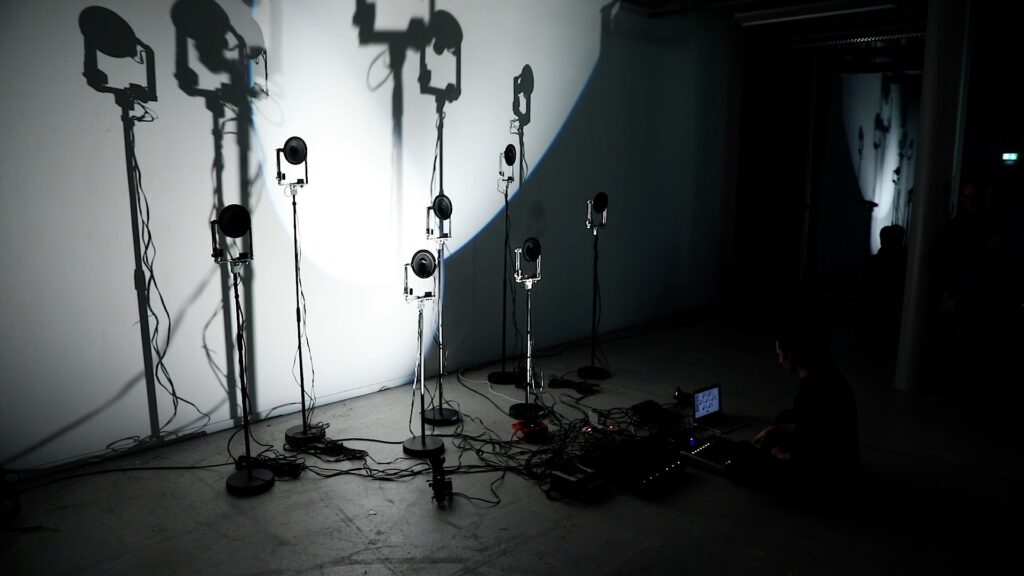
What happens when loudspeakers move? What creative possibilities are there?
The movement of a sound source causes amplitude and frequency modulation and changes in sound spatiality. The loudspeaker becomes a point source, clearly audible and localizable. Its movement and the associated acoustic effects are essential elements that can hardly be substituted by simulations.
Moreover, the movement challenges the traditional role of loudspeakers as invisible sound transducers. They come into focus, becoming visible sounding objects with an instrument-like character. Their presence calls for visual integration: the loudspeaker becomes, so to speak, the center of a spatial sound staging.
Moving loudspeakers entails performative and technical aspects. The possibilities of producing and controlling loudspeaker movements range from manual handling to the exact control of stepper motors.
The residency’s focus will be on addressing the question of a spatial sound aesthetic using electroacoustic or live electronic settings placing the loudspeaker itself at the center of attention. Of particular interest are medial strategies that take the loudspeaker seriously: as an instrument and mediator in its own right.
For more information visit: https://blog.zhdk.ch/soundinmotion
Application
Artists applying for this residency should be interested in creating a work for fixed media or live electronics with musicians using at least one moving speaker. The movement of the speaker(s) can be performed by means of humans, mechanical or electromechanical devices.
Candidates submit a conceptual idea or a composition sketch. They are asked to propose how the moving loudspeaker can be incorporated into their application – the concrete implementation will be discussed together with the selected candidate. A selective portfolio will reflect the candidate’s profound interest in moving loudspeakers and music technology, readily apparent in his or her own artistic work.
Since the residency entails several trips to Zurich, application is limited to candidates who will be arriving from within Europe.
Course of the residency
The residency comprises up to three stays at ICST: two of one to two days each and one period of maximum two weeks.
A first stay (1-2 days) is to get acquainted with the movable loudspeakers available at ICST and, if necessary, to become familiar with the control program (mostly in MaxMSP).
In a second stay (1-2 days) it is evaluated whether the intended movements in the framework of the project are possible and if necessary, whether the control means are suitable for. It should also be tested whether the desired movement effects can be achieved.
During the two-week stay, the composition will be completed. The resident has full use of the ICST laboratory during this time.
Technical Equipment
From the ICST side, a variety of small to large speakers, open or enclosed, are available. Movements can be executed
– by hand (needs people to move)
– with motors (stepper motors): Rotate horizontally (Rotation Loudspeaker), vertically
– with motors: 340° horizontal, 340° vertical (aggregate loudspeaker)
– with pendulums (motorized lifting)
Self-built equipment is welcome. But the building has to be done by the resident. Within the residencies it will hardly be possible to build special devices.

Performance
If there is mutual interest, efforts will be undertaken to present and discuss the results of the residency within a performance or a talk at the ICST. A performance can also take place as part of the public workshop performance SoundInMotion at the ZHdK.
Support
Residents will be supported throughout the residency by Peter Färber (Project Manager Moving Loudspeakers).